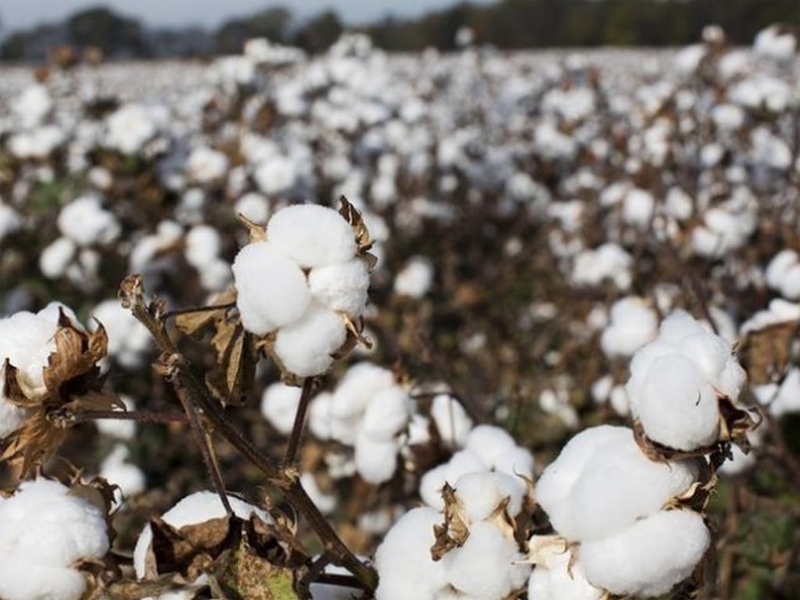Rains take toll on cotton, other crops

- 119
- 0
The recent monsoon rains have caused large-scale loss of life and property, along with the destruction of standing crops on lakhs of acres of land.
According to preliminary data, farmers have lost 86 billion 86 crore rupees due to the destruction of standing crops on 5 lakh 41 thousand 351 acres of land due to rains in Sindh alone. The cotton crop standing on 2 lakh 93 thousand 580 acres of land was destroyed. Date crop on 86 thousand 89 acres, sugarcane on 69 thousand 715 acres and rice crop on 3 lakh 4 thousand 287 acres were completely and partially damaged. Crops were destroyed on 58 thousand 799 acres in Balochistan. The losses in other provinces are different. Destruction of crops and other losses caused by abnormal rains are directly related to the economy. When crop production declines, it affects food security. The 2010 flood caused a loss of $10 billion and the above-normal rains in 2022 caused a loss of $30 billion. 10% of the country's population suffered from food shortage and 58% had food security problem. Sugarcane, rice and cotton are our cash crops. The damage caused by the recent rains has raised fears of a reduction in their production and a rise in prices. Cotton prices have already increased. Every year human lives are lost during rainy season and dilapidated houses collapse. Crops standing on thousands of acres of land are subject to floods, but unfortunately our governments do not pay sustainable and permanent attention to this.
If governments and administrative bodies demonstrate good governance, these problems can be controlled to a great extent, but this requires good will and strong will.According to the Sindh Agriculture Department, farmers have suffered a loss of Rs 86 billion 86 crore due to the recent rains. Due to the recent rains, standing crops of cotton, rice and sugarcane have been damaged on 541 thousand 351 acres of land. Climate change has a direct impact on the economy of any country, including crop damage and food security concerns. Rains and floods have become part of the routine. These conditions are making it difficult for farmers to grow grain and deliver food to hungry people. Rains and floods damage roads, houses and other infrastructure and also affect the economy. In fact, climate change is affecting our agriculture very badly, but our governments have never paid attention to the agriculture sector, heavy agricultural losses caused by rains and floods are not remedied at the government level, this is the reason why. Farmers are frustrated. There is no coordinated strategy at the federal and provincial level to save agriculture. From June to September, the whole of South Asia experiences a series of unusual rains. Pakistan's agriculture depends on rains and melting of glaciers. Research shows that the glaciers in Gilgit-Baltistan are now melting rapidly, due to which the water supply is currently in excess, but if the rate of glacier melting continues in the future, the Hindu Kush and the Himalayas will be affected by the end of this century. The region's glaciers could lose up to 50 percent in volume, which is extremely dangerous. While residential areas and gardens of Balochistan have been damaged by the recent rains, the wheat crop has also been affected by the rains in other parts of the country.
Ten years ago, the harvest was done in the months of April and May, and at that time the wheat crop was in the final stages of ripening, while in the month of May, the wheat, cotton and sesame crops were ready, but now these months It is raining unseasonably which the farmer does not need. Unnecessary rains are delaying wheat harvesting and quality of wheat is affected where there is hail, or torrential rains. Extreme heat waves and climate change have affected agricultural soils, causing changes in soil erosion, organic carbon, nutrients and acidity. These losses include loss of soil organic matter, loss of moisture content, increase in mineralization rate, loss of soil structure, increase in soil respiration rate and decrease in nutrient availability, soil salinization, etc. And due to all this deterioration, the feasibility of the soil is affected. According to report, Pakistan could lose 9% of its annual GDP due to climate change. Severe heat waves and untimely rains have also severely affected Pakistan's agricultural production. The Intergovernmental Panel on Climate Change has warned that the number of such weather events will increase in the future, posing a serious threat to food security in Pakistan. The Asian Development Bank has predicted a significant slump in the cultivation of key food and cash crops, such as wheat, sugarcane, rice, maize and cotton, in the coming years due to rising agricultural costs and climate change. Due to climate change, there is also a shortage of water due to which the farmers have started to grow corn instead of rice. Balochistan has an area of 83 lakh acres but it is not arable due to lack of water, if the temperature of our country increases even by one degree centigrade, the production of almost all crops will decrease by 5 to 15%. And unfortunately, Pakistan is rapidly moving in this direction. If timely measures are not taken to deal with food insecurity and to adapt to the harmful effects of climate change, the survival of Pakistan may be threatened. will fail to do. The most affected crops in our country are cotton, wheat and rice. Rice cultivation requires a lot of water and our country is suffering from water shortage. Talking about cotton, there is a lot of concern about cotton because due to changing weather some pests are affecting the crop. But do not attack in extreme heat or cold. But due to the sudden change of weather, if the rains come early, those insects attack the crop and this is the reason why the cotton crop is getting affected. The infrastructure of the country is such that in case of floods in the rivers and canals, there is no effective arrangement to store the water, due to which the water takes the form of floods. Populations are higher in places where the impact of climate change is greater. Therefore, there is a need to work on constructions in which water reservoirs and drainage systems are the most important. Pakistan has to switch to alternative energy which requires afforestation, increased reliance on solar and wind energy. Agriculture can be enhanced by storing water.

















































